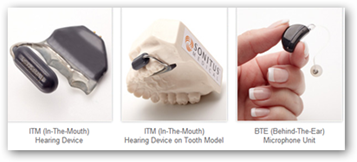This is fascinating technology and is helping those who have lost their hearing in one ear. As mentioned, the company hopes to win Medicare approval. The FDA cleared the device about a year ago.
This is fascinating technology and is helping those who have lost their hearing in one ear. As mentioned, the company hopes to win Medicare approval. The FDA cleared the device about a year ago.
SoundBite Hearing System Receives FDA Clearance for Hearing Device That Attaches to Your Teeth
“Single sided deafness is an isolating condition that can make life’s simple tasks – crossing a road, social gatherings, business meetings – very difficult. The term single sided deafness refers to a condition where there is significant or total hearing loss in one ear, while the good ear has hearing within normal limits.”

People with removable dentures may not be good candidates but I wonder if dental implants work? The entire key here is the connection to the bone and nobody can see you wearing it. There’s no effect on eating either. You do have to charge the unit every evening and keep it clean. BD
It isn’t a hearing aid, which amplifies sound in frequencies where peoples’ hearing is diminished. It is aimed instead at people who are completely deaf in one ear, often because of a problem in the cochlea, the spiral-shaped structure in the inner ear. About 8 million Americans were born with single-sided deafness and another 1.5 million developed it later in life, sometimes overnight for mysterious reasons. SoundBite can also help people with untreatable conductive hearing loss, which can be caused by trauma to the ear drum or chronic ear infections.
The device costs $6,800 and is currently available in a pilot launch at 42 major hearing centers in the U.S. Its maker, Sonitus Medical, hopes to win Medicare coverage for it before making it more widely available, says CEO Amir Abolfathi, who also helped develop invisible braces for teeth. Insurers generally don’t cover traditional hearing aids, but a few have covered SoundBite as a prosthetic device.
SoundBite does require a visit to the dentist to check for any tooth or gum issues, and to make a mold, from which the customized mouth device is made. Some patients can’t use it due to the angle of their back teeth; people with removable dentures can’t either, because it requires a firm connection to jawbone to connect sound waves.